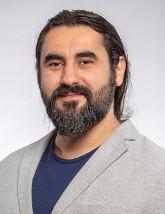Artificial Intelligence-Assisted Prediction of Late-Onset Cardiomyopathy Among Childhood Cancer Survivors. Journal Article
Local Library Link: Find It @ Loyola
| Authors: | Güntürkün, F; Akbilgic, O; Davis, RL; Armstrong, GT; Howell, RM; Jefferies, JL; Ness, KK; Karabayir, I; Lucas, JT; Srivastava, DK; Hudson, MM; Robison, LL; Soliman, EZ; Mulrooney, DA |
| Article Title: | Artificial Intelligence-Assisted Prediction of Late-Onset Cardiomyopathy Among Childhood Cancer Survivors. |
| Abstract: | PURPOSE: Early identification of childhood cancer survivors at high risk for treatment-related cardiomyopathy may improve outcomes by enabling intervention before development of heart failure. We implemented artificial intelligence (AI) methods using the Children's Oncology Group guideline-recommended baseline ECG to predict cardiomyopathy. MATERIAL AND METHODS: Seven AI and signal processing methods were applied to 10-second 12-lead ECGs obtained on 1,217 adult survivors of childhood cancer prospectively followed in the St Jude Lifetime Cohort (SJLIFE) study. Clinical and echocardiographic assessment of cardiac function was performed at initial and follow-up SJLIFE visits. Cardiomyopathy was defined as an ejection fraction 50% or an absolute drop from baseline = 10%. Genetic algorithm was used for feature selection, and extreme gradient boosting was applied to predict cardiomyopathy during the follow-up period. Model performance was evaluated by five-fold stratified cross-validation. RESULTS: The median age at baseline SJLIFE evaluation was 31.7 years (range 18.4-66.4), and the time between baseline and follow-up evaluations was 5.2 years (0.5-9.5). Two thirds (67.1%) of patients were exposed to chest radiation, and 76.6% to anthracycline chemotherapy. One hundred seventeen (9.6%) patients developed cardiomyopathy during follow-up. In the model based solely on ECG features, the cross-validation area under the curve (AUC) was 0.87 (95% CI, 0.83 to 0.90), whereas the model based on clinical features had an AUC of 0.69 (95% CI, 0.64 to 0.74). In the model based on ECG and clinical features, the cross-validation AUC was 0.89 (95% CI, 0.86 to 0.91), with a sensitivity of 78% and a specificity of 81%. CONCLUSION: AI using ECG data may assist in the identification of childhood cancer survivors at increased risk for developing future cardiomyopathy. |
| Journal Title: | JCO clinical cancer informatics |
| Publisher: | Unknown |
| Date Published: | 2021 |
LUC Authors
-
 32
32Akbilgic
Related LUC Article
